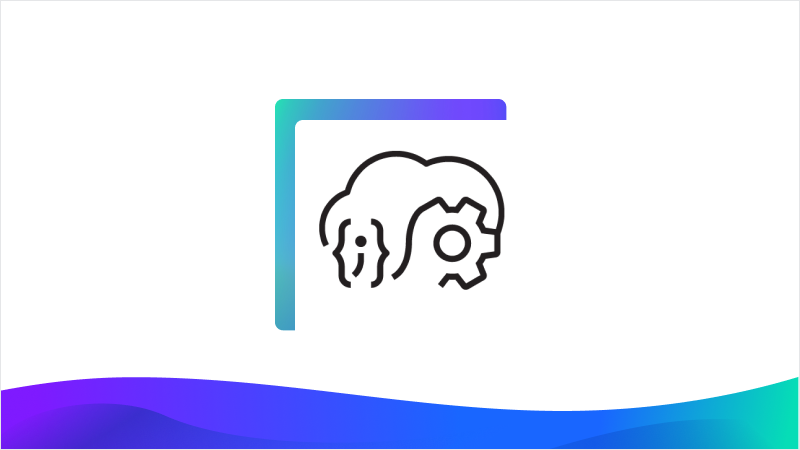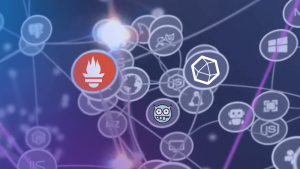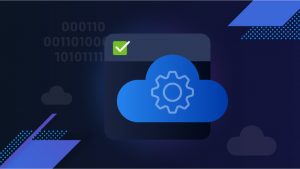DevOps observability delivers answers that enable DevOps and DevSecOps teams to automate and innovate at speed while increasing quality, reliability, and application security. Learn how organizations can use DevOps observability to deliver better software faster.
As organizations accelerate innovation to keep pace with digital transformation, DevOps observability is becoming a critical key to success for DevOps and DevSecOps teams. However, getting reliable answers from observability data so teams can automate more processes to ensure speed, quality, and reliability can be challenging.
Indeed, the pressure to digitally transform is increasing. According to recent Dynatrace research, organizations expect to make software updates 58% more frequently in the coming year. This drive for speed has a cost: 22% of leaders admit they’re under so much pressure to innovate faster that they must sacrifice code quality.
DevOps and DevSecOps practices help organizations release software faster and more frequently, paving the way for digital transformation. In fact, 98% of DevOps leaders say that extending DevOps to more applications is key for digital transformation and customer experience, and 41% of applications will be fully DevOps enabled by 2023.
However, DevOps teams are still held back by siloed and frequently conflicting data insights. In addition, 27% of IT and DevOps teams’ time is invested in manual CI/CD tasks such as detecting code quality issues, which reduces time spent on innovation.
This DevOps observability guide explores the benefits of automatic and intelligent observability for DevOps and DevSecOps complexity. From site reliability engineering to service-level objectives and DevSecOps, these resources focus on how organizations are using these best practices to innovate at speed without sacrificing quality, reliability, or security.
DevOps and SRE: Methodologies that are transforming software development with the help of DevOps observability
DevOps is a software delivery methodology that comprises flexible practices and processes to create and deliver applications and services, ultimately closing the gap between software development and IT operations. Rather than a technology, DevOps is a tactical approach to application development.
Site reliability engineering (SRE) is a software operations methodology that enables organizations to create highly reliable and scalable applications. SRE applies software engineering principles to operations and infrastructure processes. This methodology aims to improve software system reliability using several key categories such as availability, performance, latency, efficiency, capacity, and incident response. Site reliability engineers, or SREs, lead these efforts.
DevOps and SRE are fundamentally transforming software development today. With DevOps observability, they can also complement one another. While DevOps primarily centers on software development and delivery, SRE typically applies DevOps principles to enhance operational processes. Organizations that already use DevOps practices may find it beneficial to also incorporate SRE principles. Organizations that are new to both practices will want to adopt a strategy that incorporates both.
 |
Eliminate silos, improve cross-team collaboration, and release better software faster with DevOps monitoring – product page
DevOps is a tactical approach to creating and delivering software designed to close the gap between development and IT operations. Leveraging observability, AI, and automation on a single platform helps Dev and Ops teams collaborate more efficiently, accelerate CI/CD pipelines, and improve code quality. |
 |
What is DevOps? Unpacking the purpose and importance of an IT cultural revolution – blog
Combining operations and development to deliver continuous software improvement can reduce complexity and improve application output. Learn more about DevOps and best practices to achieve it at scale. |
 |
Gene Kim offers an expert view on DevOps and explains how to maximize success – blog
Gene Kim joined us at Perform 2021, where he offered his own unique take and insight into DevOps from a career spanning 22 years. |
 |
SRE vs. DevOps: The differences—and similarities – blog
DevOps is focused on optimizing software development and delivery, and SRE is focused on operations processes. Both practices live by the same overarching tenets. Here we’ll cover the purpose of each and explore how they interact. |
 |
What is SRE (site reliability engineering)? And what do site reliability engineers do? – blog
Modern software development requires bridging the increasing demands of Development and Operations without conflict. Site Reliability Engineering is a growing discipline and role that fills in the gaps between Dev and Ops. |
CI/CD and SLOs: Processes that help automate the SDLC with DevOps observability
Continuous integration and continuous delivery (CI/CD) is an essential DevOps practice that helps organizations balance speed and reliability when innovating. While continuous integration streamlines the internal process of developing a new application, continuous delivery guarantees that the code is ready to deploy.
Additionally, DevOps teams can automate their CI/CD pipelines to accelerate the various stages of the software development lifecycle (SDLC). While DevOps teams are frequently less stressed due to the structure and predictability of CI/CD, customers can be sure that they’ll always have the latest and most up-to-date features. A CI/CD practice can offer a high level of scalability to organizations looking to innovate quickly and efficiently.
Service-level objectives (SLOs) are another critical tool that DevOps teams use to automate software development processes and deliver innovation faster. SLOs represent the health of a particular service. They enable organizations to set and measure specific metrics for agreed-upon service levels, ensuring that users receive the high-quality experience they expect. SLOs can also allow organizations to align the business with DevOps and SRE teams along common business and technical goals. Finally, when automated using DevOps observability, SLOs can help SREs proactively optimize services and enable progressive delivery processes that balance rapid software deployment with risk mitigation strategies.
 |
Continuous integration and continuous delivery (CI/CD): How it enhances DevOps and continuous deployment – blog
Here’s what you need to know about CI/CD practices, how they relate to each other, and how they benefit DevOps teams as they optimize and automate more processes to achieve ever-faster time to value for customers. |
 |
What is continuous delivery and what are best practices for implementing it? – blog
Continuous delivery and the automation that comes with it can take your software delivery practices to the next level. Read more. |
 |
Guide to event-driven SRE-inspired DevOps for leveling up your existing CI/CD strategy – blog
In this blog, we dig into a core capability of Keptn: SLI/SLO-based Evaluations for Quality Gates as well as Auto-Remediation for DevOps. |
 |
What are SLOs? How service-level objectives work with SLIs to deliver on SLAs – blog
What are SLOs? Here’s a guide to service-level objectives, how they work, and how they help DevOps teams automate and deliver better software. |
 |
How to start with SLOs to align business, DevOps, and SREs – blog
In this blog, Dynatrace DevOps activist Andreas Grabner walks through an example of how to use SLOs to align business, DevOps, and SREs. |
 |
Automating SLOs helps SREs go fast: Dynatrace at SLOconf – blog
At Nobl9’s SLOconf, Dynatrace “SLOgicians” anchored 5 sessions demonstrating benefits and best practices for developing and implementing (SLOs). |
 |
Using SLOs to become the optimization athlete with Dynatrace – blog
Much like in sport, we cannot become the best without well-defined goals. This blog will walk you through how to create objectives for your organization by optimizing the system, creating production SLOs, continuously improving services performance, and more. |
 |
How to automate canary release decisions with Dynatrace – blog
Progressive delivery enables speeding up while managing the risk of software deployments and configuration changes. One of the aspects of progressive delivery is using new zero-downtime deployment strategies such as Canary, Blue-Green, or Feature Flags. This blog discusses how to automate Canary release decisions with Dynatrace. |
DevSecOps: Integrating security into DevOps with DevOps observability
Like DevOps, DevSecOps is a software delivery methodology that incorporates security testing and protection into each stage of the SDLC. Its main goal is to proactively address security concerns throughout the DevOps process, especially in the earliest stages—an approach that is also referred to as “shift-left security” or “security as code.” DevSecOps also allows organizations to release higher-quality software at a faster pace and identify vulnerabilities before they reach production.
DevSecOps builds on DevOps practices by ensuring that security concerns never fall through the cracks. Integrating security into the DevOps workflow helps organizations improve their application security posture, enabling them to better protect their users and business from cyberattacks and data breaches. For instance, advanced DevOps observability tools that incorporate DevSecOps capabilities can spot and address dangerous zero-day vulnerabilities, such as Log4Shell. These capabilities prevent malicious actors from executing commands on certain Java processes that are accessible to the outside world. By automating DevSecOps release validation through quality gates, organizations can even ensure that their releases are secure by default.
 |
What is DevSecOps? And what you need to do it well – blog
Like DevOps, DevSecOps is as much about culture and shared responsibility as it is about any specific technology or techniques. This blog unpacks DevSecOps in detail, delving into its benefits, challenges, and how to implement a successful DevSecOps strategy. |
 |
‘Security as code’ demands proactive DevSecOps – blog
Learn what “security as code” is, how to build a “security as code” culture, and why organizations must adopt a proactive DevSecOps stance. |
 |
DevOps vs DevSecOps: Why integrate security and DevOps? – blog
If security concerns are driving you to review your approach to development, you’re likely weighing DevOps vs DevSecOps. This blog explains the difference and how to incorporate security practices into your software delivery workflows to protect your users and your business. |
 |
Automated DevSecOps release validation ensures security by default – blog
In modern cloud-native environments, application teams that are responsible for innovation face a dilemma: How are they to comply with ever-increasing security requirements while managing fast release cycles for hundreds of microservices? Without an automated approach to security enforcement, this can drastically slow down your team’s ability to safely release new application functionality. Read this blog to learn more. |
 |
Identify and minimize production risk of Log4Shell – blog
The Log4Shell vulnerability allows an attacker to instruct the vulnerable system to download, and subsequently execute, a malicious command. Asad Ali explains the vulnerability and shares three main priorities for fixing affected environments. |
DevSecOps tools and processes
Adopting DevOps and DevSecOps practices takes good planning and cultural change. But there are several tools and processes that can help organizations accomplish this goal. DevOps observability is one such capability. When it comes to DevOps metrics, the Four Keys from Google’s DevOps Research and Assessment (DORA) team are a great place to start. These key performance indicators can help any DevOps team achieve a higher performance standard while improving code quality.
Meanwhile, chaos engineering allows DevOps teams to proactively test applications for unstable behavior by subjecting them to controlled, simulated crises, including malicious events such as a cyberattack. A cloud automation solution that enables tool-agnostic automation across the SDLC can help organizations orchestrate application life cycles in complex, multicloud environments. This automation alleviates the challenges that DevOps and SRE teams often face when extending the life cycle with new methodologies, such as DevSecOps, or new technologies, such as IT service management (ITSM) tools.
 |
9 key DevOps metrics for success – blog
Congratulations! You have set up a DevOps practice. Now, with the hard work done and metrics in place, you can sit back, relax, and witness the seamless collaboration between your Dev and Ops teams. If only it were that easy. This blog outlines nine key DevOps metrics will help you meet your goals. |
 |
What is chaos engineering? – blog
Testing for mishaps you can predict is essential. But with the complexity that comes with digital transformation, teams need to make sure applications can withstand the “chaos” of production. This blog explains how chaos engineering answers this need so that organizations can deliver robust, resilient cloud-native applications that can stand up under any conditions. |
 |
Dynatrace enables tool-agnostic automation for your application lifecycle – blog
By following the DevOps mantra of shifting left, the new lifecycle orchestration capability of Dynatrace Cloud Automation allows you to fully automate tasks that lead to a validated release and those that need to be executed after validation. Read this blog to learn more. |





Looking for answers?
Start a new discussion or ask for help in our Q&A forum.
Go to forum